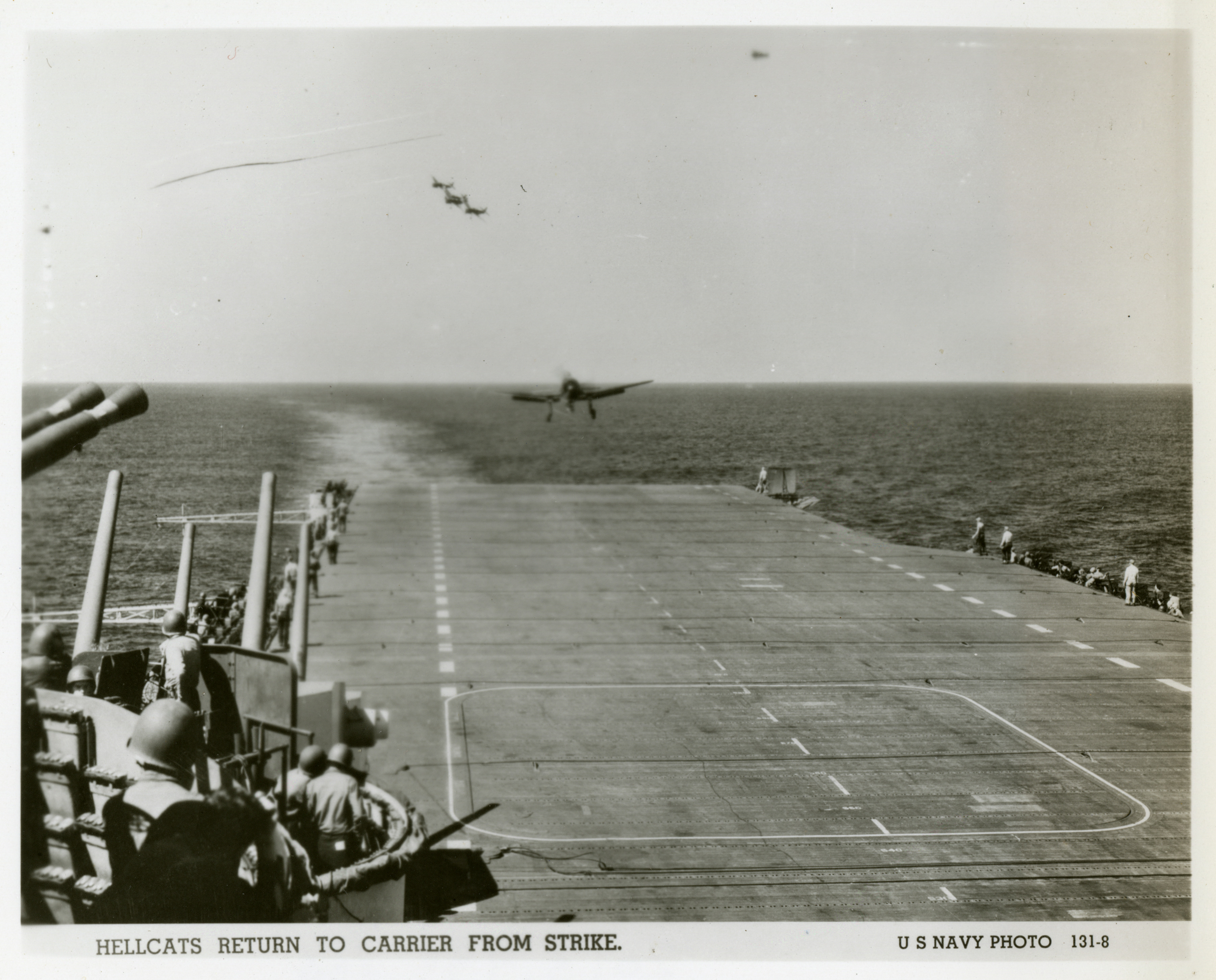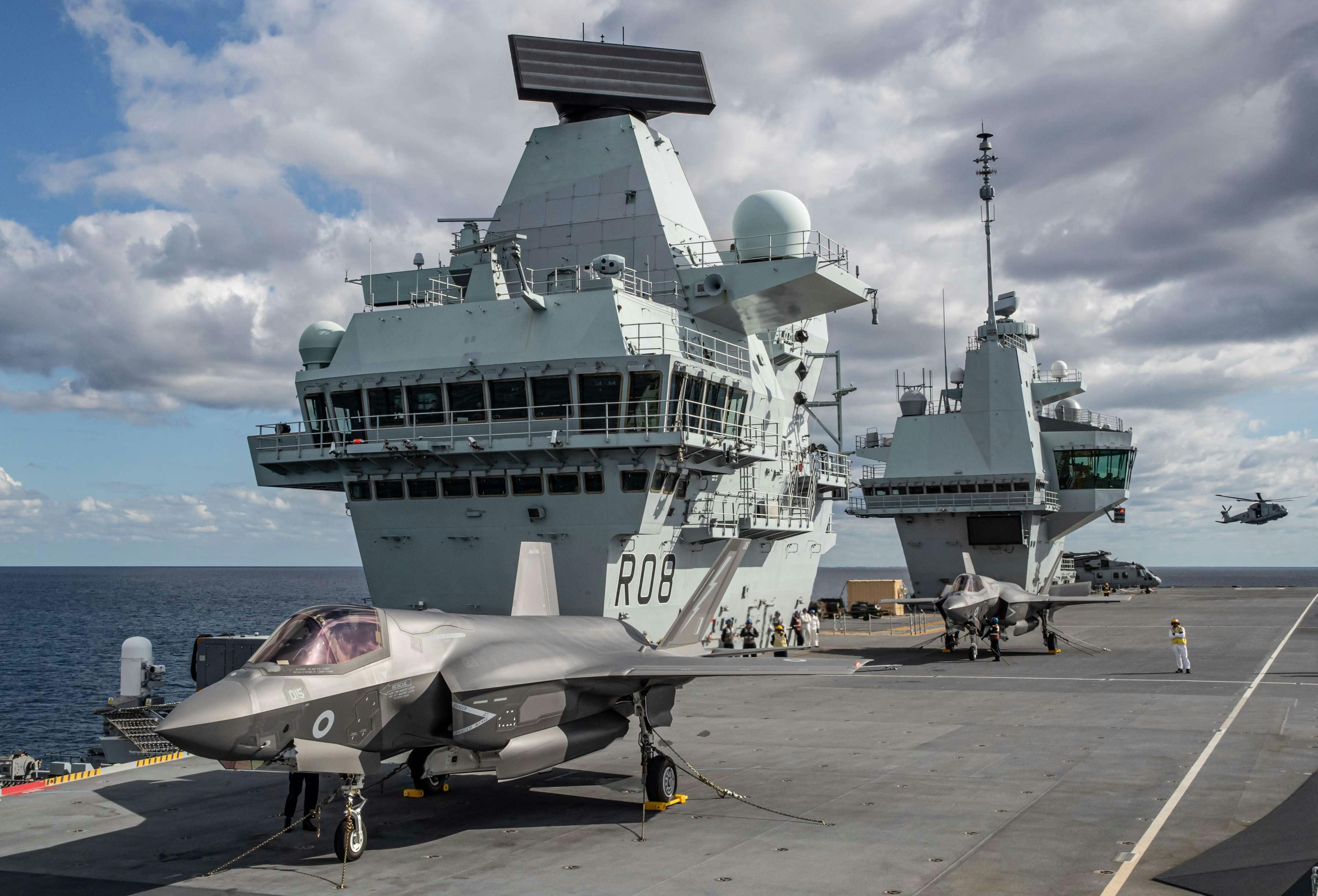Aircraft Carrier Landing - Traditionally, when F/A-18E/F and EA-18G pilots approach an aircraft carrier for landing, they focus on power and other related adjustments to properly align the aircraft, allowing the jets to experience a period of instability. Ascending, descending and rolling decks on ramps.
With Magic Carpet, however, the Navy has "decoupled" glideslope, angle of attack, and approach formation. Pilots can adjust glideslope through integrated controls rather than relying more on changes in angle of attack to change power.
Aircraft Carrier Landing

Changes to the aircraft's integrated controls by Magic Carpet software create very fast and small fluctuations in the wings and their edges, causing them to spread open like a bird's wing on landing. The result, test pilots say, is a smoother ride on deck.
Watch An F 35 Land On An Aircraft Carrier In Slow Motion
Test pilot reports, as well as a wealth of data, show that Magic Carpet landings on carrier decks are smoother, more reliable and apparently safer.
Pilots reported no difference in landing either the Super Hornet or the Heavy Growler during testing. For some flights, the Super Hornet is deliberately overloaded on one side or the other.
During testing, the Navy reported only one "bomb" incident - an aircraft whose tail hook failed to catch the arresting wire and had to fly off the deck to pass again. In those cases, the hooks appear to bounce off the ground via wires, officials said.
Pilots put the aircraft in strange or dangerous approaches to test the Magic Carpet - but the system brought the plane to a clean, firm landing spot on the deck every time.
First Carrier Landing Kicks Off Two Weeks Of Sea Trials For F 35c
Tests have proven the current interim version works and could be offered to some fleet aircraft in the coming months, officials said. The final fleet launch version of the technology is expected in 2019.
In the last week of June, the US Navy completed testing of technology designed to make carrier landings safer, more efficient and easier for pilots and aircraft. A test of the Navy's carrier approach and recovery precision enablement technology integrated control sea surge guidance technology (known in aviation circles as the "Magic Carpet") was conducted aboard the aircraft carrier CVN 73 USS George Washington.
With a software change in the aircraft's integrated controls, the magic carpet on the F/A-18E/F Super Hornet and EA-18G Growler changes the jet's angle of attack with relatively small and quick wing adjustments to achieve the correct glideslope - the same. Like a bird's wingspan, the software makes it easier and safer for pilots to land on a carrier.

Capt. David Kindle, program manager for the F/A-18 and EA-18G, said the technology brings glideslope, angle of attack and structure closer to an aircraft carrier. Pilots can adjust the glide path without changing power. This article uses naked URLs, which are not informative and are likely to contain broken links. Please consider converting them to full citations to proofread articles and ensure a consistent citation style is maintained. There are many templates and tools available to help with formatting, such as Reflinks (documtation), reFill (documtation), and Citation bot (documtation). (August 2022) (Learn how and why this template message was removed)
Inside Story Of India's Tejas Fighter's First Aircraft Carrier Landing
This article requires additional citations for verification. Please help improve this article by adding citations to reliable sources. Unsourced material may be challenged and removed. Find Resources: "Modern U.S. Navy Carrier Air Combat" - News · Newspapers · Books · Academics · JSTOR (June 2015) (Learn how and why this template message was removed)
Modern US Navy carrier air operations include the use of fixed-wing and rotary-wing aircraft for combat and non-combat missions on and around the carrier. Flight operations are highly developed based on the experience of the USS Langley dating back to 1922.
On the flight deck of an aircraft carrier, dedicated aircrews manage the various roles of air operations. Different flight deck crew members wear colored jerseys to visually differentiate their tasks.
Salute to the Kiddies as Secretary of the Navy Ray Mabus
Landing Jet F16 On Aircraft Carrier In Ocean. Military And War Concept. 3d Rendering. Stock Photo, Picture And Royalty Free Image. Image 78976065
Everyone involved in the flight deck has a specific job, indicated by the color of his deck jersey, buoy coat and helmet.
When a valued visitor (DV) arrives on board by plane, a "Call the Kid Rainbow" call is issued. Usually two of the jerseys of each color stand facing each other in front of the boat, in a trance-like homage to DV. These sailors in colorful jerseys are known as "Rainbow Sideboys".
"Air Boss" redirects here. For the commander of all U.S. Naval Air Forces, sometimes referred to as "Air Chief", see Commander Naval Air.

Also known as the Air Boss, the Air Force Officer (along with his assistants, the Little Boss) is responsible for all aspects of aircraft operations, including the hangar deck, flight deck, and aircraft up to 5 nautical miles (9.3 km). ; 5.8 miles) from the operator. From his position at primary flight control (PriFly, or "Tower"), he, along with his assistants, conducted aircraft surveys in the carrier control area (2,500 feet (760 m) from the surface, 500 feet (760 m), 5 nautical miles from the carrier). (9.3 km; 5.8 mi) distance within a circular boundary defined by a horizontal radius, and wishing to operate within the control zone, must obtain his approval before attempting.
Aircraft Carrier Landing Mission
This officer is usually a commanding officer, usually a former CVW squadron commander, elected to the rank of captain.
The Air Chief's normal working jersey color is yellow, but the Air Chief can wear any color he likes because he can suppress everyone working on the flight deck, hangar, and fuel crew.
A catapult officer, also known as a shooter, is a commissioned officer responsible for all aspects of catapult maintenance and operation. They ensure that there is sufficient wind (direction and speed) on the deck and the steam settings of the catapults will ensure that the aircraft has sufficient speed in d of travel. They are also responsible for signaling to the pilot that he can fly.
ACHOs, also known as aircraft operators (ACHOs, or simple operators), are responsible for managing aircraft in flight and on the hangar deck. Handlers are responsible for avoiding "locked decks" because there are so many misplaced planes that they can no longer land before rescheduling.
Modern United States Navy Carrier Air Operations
This handler works in flight deck control, where a scale model aircraft representation on the flight deck is used to suppress the actual state of the aircraft on the flight deck.
As the name implies, the aircraft commander is responsible for directing the movement of all aircraft in the hangar and on the flight deck. They are listed as Fellows of Aviation.
They are colloquially known as "bears" and those who work in hangars are known as "hangar rats". In some carriers, an officer known as a flight deck officer also serves as an aircraft commander. During flight operations or flight deck "resupply" there are about 12-15 yellow shirts on the flight deck who report directly to the "handler". Although aircraft directors are often used at coastal airfields, their role is especially important in confined flight deck environments where aircraft typically taxi within inches of each other, often with ship roll and pitch. The director wears a yellow robe and uses a complex set of gestures to direct the plane (lighting a yellow stick at night).
/images/uploads/arrestorcable.jpg)
A Landing Signal Officer (LSO) is a qualified and experienced pilot who maintains visual control of an aircraft during the terminal phase prior to landing. LSOs ensure that approaching aircraft are properly configured and they monitor the aircraft's glideslope angle, altitude and formation. They communicate with landing pilots via voice radio and light signals.
U.s. Navy's F 35c Has Landing Mishap On Uss Carl Vinson
The arresting gear officer is responsible for the operation, setup, and monitoring of the landing area deck status (whether the deck is "clear" and ready to land aircraft or "foul" and not ready to land). The arresting gear motors are set to apply different resistances (weight settings) to the arresting wires depending on the type of aircraft landing.
Cycling operations refer to the launch and recovery cycle of aircraft in groups or "rounds". Launching and recovering aircraft on an aircraft carrier is performed asynchronously, and cyclic operations are common on US aircraft carriers. Cycles are usually around an hour and a half, but cycles as short as an hour or as short as an hour and forty-five minutes are not uncommon. The shorter the cycle, the less aircraft can be launched/recovered; The longer the cycle, the more important fuel is for the aircraft on board.
"Evts" typically consist of approximately 12-20 aircraft and are numbered sequentially within a 24-hour flight day. Prior to flight operations, the aircraft were arranged ("positioned") on the flight deck so that the Evt 1 aircraft could easily taxi to the catapult after startup and inspection. Once the Evt 1 aircraft is launched (usually takes about 15 minutes), the Evt 2 aircraft will be ready to launch approximately one hour later (depending on the cycle time used). All these aircraft launches make room on the flight deck for land planes. Evt 2 After the aircraft starts, Evt 1
Aircraft carrier landing game for pc, rc aircraft carrier landing, jet landing on aircraft carrier, youtube aircraft carrier landing, f 35 landing on aircraft carrier, landing on aircraft carrier cockpit view, c 130 aircraft carrier landing, aircraft carrier landing game, f 16 landing on aircraft carrier, aircraft landing on carrier, aircraft carrier landing video, fighter jet landing on aircraft carrier
0 Comments